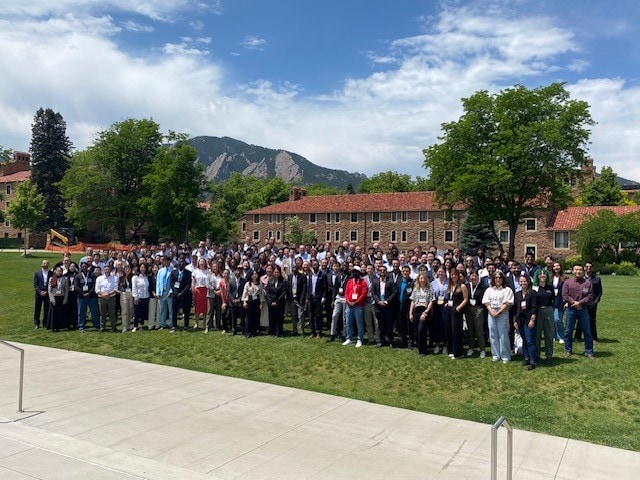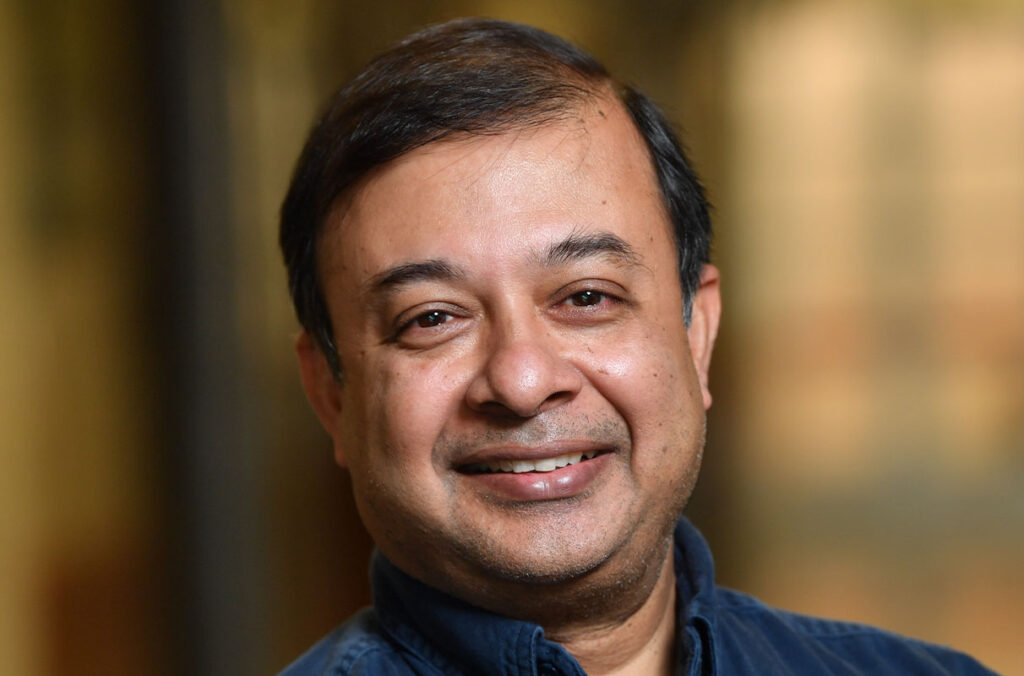
[Image above] A record-breaking 234 attendees came this year to the annual Refractories Symposium in St. Louis on March 27–28. The audience enjoyed a day-and-a-half of excellent talks, among other activities. Credit: ACerS
The St. Louis Section and Refractory Ceramics Division welcomed a record-breaking 234 attendees to the 55th annual Refractories Symposium in St. Louis, Mo., on March 27–28, 2019. Attendance at the symposium has grown steadily over the years, making it the most significant refractories annual gathering for the refractories community in North America. This year, attendees came from all regions of the United States and 11 foreign countries: Australia, Brazil, Canada, France, Germany, India, Ireland, Mexico, Peru, Poland, and Turkey.
Besides the international flavor, the emerging youthfulness of the refractories community was notable and a testament to the success of the refractories industry’s ability to attract young engineers to the industry. “This is the youngest-looking group so far,” remarked Ashley Hampton, the new RCD chair.

The symposium began with brief tributes to two industry luminaries who died in 2018—Richard “Dick” Bradt and Dennis Hageman, Sr. Bradt was professor emeritus at the University of Alabama, Birmingham, and Hageman worked for Missouri Refractories Company (Morco, Pevely, Mo.).
To honor and recognize Bradt and the magnitude of his impact on the industry, next year’s symposium theme is “Structure and properties of ceramics.” Mark your calendars now to be in St. Louis next March 25–26.
This year’s theme was “Shaped refractories,” which means there was something interesting and useful for everyone at this meeting. Beau Billet (Edward Orton Jr. Ceramic Foundation) and Dawn Hill (Xertech Specialties, LLC) organized the symposium. Patty Smith, St. Louis Section treasurer, handled all the logistics and onsite organizing that kept the symposium running smoothly.
Networking was a hallmark of the event, with coffee breaks, meals, and a reception with exhibit. Not surprisingly, bringing 234 people together generates a lot of conversations! Check out all the action in our Flickr photo album.

Top talks at the symposium
Talks covered topics such as forming processes, resilience of precast monolithics, controlled drying of cast shapes, materials for steel ladle purging plugs, fused cast refractories, nondestructive detection of internal defects, thermal behavior of andalusite brick, thermomechanical and corrosion of zirconia for degasser use, phase changes in aluminum phosphates, and magnesia slip casting.
While all the talks this year were excellent, three particularly captured my notice.
Dana Goski, vice president of research at Allied Mineral Products and ACerS president-elect, gave the St. Louis Section Theodore Planje Award lecture. Her talk tied together her personal interests in DNA research, her professional interests in refractories, and emerging opportunities for artificial intelligence (AI) in materials science. Goski noted that anyone can have their DNA mapped, and it can be used to predict illness or to design drugs customized to individual genetics.
She also posited that some of these AI concepts can be applied to refractories. Many factors contribute to the “ancestry and genetic history” of refractories, including grain shape, crushing system, color, density, impurities, friability, crystal structure, and furnace type. With so many factors in play, she says, “We can’t see a pattern if it isn’t all in one place, which means we need a tool to look for patterns.” AI tools, she says, are “… reinventing the way we invent. AI is changing the way we search for new materials.”

Kelly Wilkerson, assistant teaching professor at Missouri University of Science and Technology, gave an unusual but interesting talk on the history of the refractories industry in Missouri. Because of its iron ore deposits and network of tributaries to generate hydropower, an ironmaking industry bloomed in the 19th century. Missouri was also blessed with rich clay deposits and, when sandstone hearths began to collapse, the ironworks rebuilt the hearths with fireclay brick and gave birth to Missouri’s refractories industry. Wilkerson picked her way through a maze of old refractory companies, mergers, name changes, and closures, eventually revealing the still-active refractories industry Missouri enjoys today.
The symposium finished strong. The final talk was an exercise in classic ceramic engineering applied to modern manufacturing problems. Keith DeCarlo of Blasch Precision Ceramics presented his work on solving slip casting of magnesium oxide shapes. Because magnesia is highly reactive in aqueous suspensions, DeCarlo turned to classic ceramic engineering principles to evaluate nonaqueous suspension media or pH-controlled aqueous medium. In his talk there were Hamaker constants, dielectric dispersion curves, X-ray diffraction spectra, and images of slip cast failures and successes. Ultimately, DeCarlo showed that aqueous slip casting of MgO is possible when the water pH is high and stabilized with a polyelectrolyte.
Author
Eileen De Guire
Spotlight Categories
- Division News
- Meeting Highlights
- Section News
Divisions
- Refractory Ceramics
U.S. Sections
- Greater Missouri


